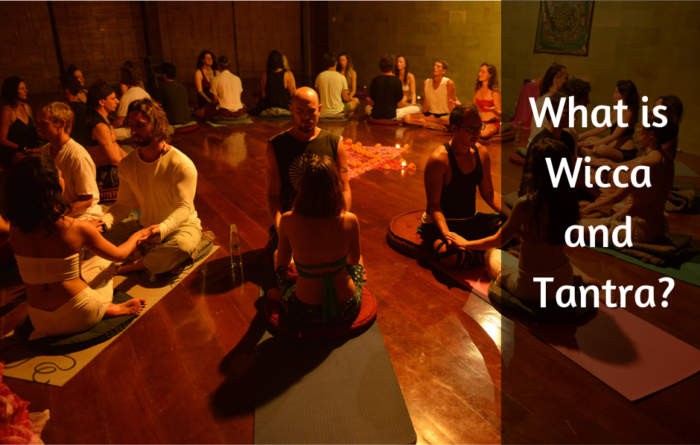The Truth About Wicca and Tantra (witchcraft and Tantrics).

Paganism, Cults, Wicca and Tantra
“Pagan”, a term derived from latin word Paganus which originally meant “rural”. It has been said that long after Christianity was accepted in cities and towns of the roman empire, the villagers continued idol worship, and gradually in time, the term Pagan was used for any practice other than Christianity. The word further evolved to have varied meanings and towards the end of 20th century “Paganism” was widely being used to describe cults which included the likes of Wicca and tantra.
Cults were considered a form of organized religion, differentiated from mainstream religion, and were said to follow dangerous rituals. They were seen as groups which indulged in sexual abuse, violence and psychological control of its members. However, during 1980’s, this view gradually changed, and people started referring these cults as a new religious movement.
Wicca was one of the neo-pagan religion brought into light by Gerald Gardner in 1950’s and 1960’s. He was an English priest who spent most of his time outside his country England with natives and learnt about their practices. He called Wicca as witchcraft and people who followed Wicca were called Witches. By the 1980’s, they were being referred to as Wiccans.
History of Witchcraft
Witchcraft is one of the most ancient belief systems known to mankind. Archaeological discoveries show that it can be traced back to over 30,000 years. Some of the ancient paintings show a man with the head of a stag and a pregnant woman with eleven people in a circle. The Wiccan view is that these paintings depict Gods’ and Goddess’ aspect of nature.
The image of a witch has recently been portrayed as that of an evil force. However that does not hold true. In fact, during the ancient times witches were considered wise. They were people who understood nature and its forces. They had knowledge of herbs and treated their fellow men suffering from physical and mental illness. Their advice was sought after before making important decisions. Witches understood that nature is to be respected for the human race to survive.
The Role of Church
It is stated that between the 15th and 18th century the Church spread myths about these traditional religions to convert people to Christianity. The misconceptions which were spread about witches also helped medical science greatly since it was still at a nascent stage back then. By spreading the word that witches were evil, the power from healer witches was taken. People started to place their trust on doctors. The respect which was enjoyed by these wise people traditionally gradually transferred to the physicians who were struggling to draw people towards medical science from traditional beliefs. Sadly, this misinformation from the past still exists in the contemporary world. Hence witchcraft is called Wicca to avoid harassment to people who follow the tradition.
Witchcraft shares its principles and fate largely with the Indian tradition of Tantra. Tantrics in today’s time are greatly misunderstood and is seen as an evil tradition by a layman. Cinema has also aided the belief that Wicca and Tantra is associated with the dark forces.
What is the difference between Wicca and Tantra?
Wicca and Tantra both are traditions that greatly respect nature. Both traditions believe in responsibility and the practitioner is responsible for all his actions and consequences. Both are spiritual traditions that teach about oneness with humanity and the universe.
Wicca uses spells which are meant to create love and harmony. The potions that are made are medicinal and prepared with natural ingredients. The five elements which constitute matter in the universe i.e. earth, water, fire, air and space are worshipped as deities in both the traditions.
Tantra Shastra also known as Agama Shastra is stated to have been revealed by Lord Shiva as the path to be followed in the fourth yuga. The relationship of guru and disciple is very significant and is a characteristic of Tantra tradition.
Tantra accepts every aspect of creation without discrimination which leaves enough space for misinterpretations and distortions. There is no fight to renounce but an effortless transformation comes with living and accepting life as it is.
According to Tantra, the entire universe is a manifestation of pure consciousness. One aspect being Shiva, the masculine, retains a static quality and remains unmanifested. The other aspect, Shakti being feminine is the dynamic and creative. Shakti is regarded as the mother of the universe as creation flows from her. Tantra regards a human body as a mini universe and all that is found in the cosmos can be found within each human being.
A Wiccan and a Tantric both have been maligned to be traditions in which they practice bizarre rituals to attain power. However in both the cases it is not true. In essence both the traditions believe in religious freedom, both draw energy from nature and within. They believe in harming no one as actions and consequences is a principle that all nature respecting traditions follow.
Also read- The Myth of Corruption





